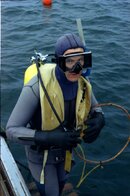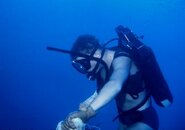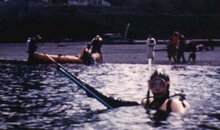I have no intention of playing along, make your point, I'll read it and possibly respond, but this game doesn't really interest me.
Most times, especially on forums like this, we want quick, easy answers that do not challenge the current methods of doing things. But we are having people die in situations which should not precipitate a life-threatening emergency. The Five Whys methodology of Root Causes Analysis is used to drill down to the root causes. Sometimes those root causes can be very uncomfortable to see. It goes to commercialism, training techniques, and the equipment we use.
I come from an earlier time. We ran out of air many times in my early diving (1959-67). But we were taught differently. When I finally got certified by LA County in 1963, our pool harassment session consisted of the instructor putting a gill net over us, and having us untangle ourselves. In the process he would turn our air off, and we'd take a breath and nothing was there; buddy breathing under the net was necessary to pass his course (LeRoy French was the instructor's name). Our equipment was different too, with the J-valve and no SPG being used. At times the J-valve would accidentally be bumped and we would not have that 300 psi remaining as it had already been pulled. This was fairly normal.
In my book, The NOAA Diving Manual, Diving for Science and Technology, copyright 1975, they state:
All applicants for diver training should successfully perform the following swimming exercises without equipment showing a noticeable degree of confidence and good watermanship to the satisfaction of a designated examiner.
1.) Swim 300 yards using the crawl, sidestroke, and backstroke
2. Swim under water for a distance of 50 feet without surfacing
3. Stay afloat for 30 minutes
These were basic watermanship skills. Without those skills (NAUI had similar requirements), the diver could not start the scuba classes. [/quote]
Many people graduating from scuba class don't have the confidence that they used to have in the water. This so-called "out-of-air" is only true if someone believes that there is no air available at all, and they will die without either the buddy's octopus or an alternative air source. This leads to panic, and to increased efforts which use the oxygen faster. There are alternatives, such as surfacing. At 33 feet, there are two lungs-full in each diver, for instarce...more later. Here are three photos from times past, with my photo on the right during a club dive in 1963 or so.
SeaRat








